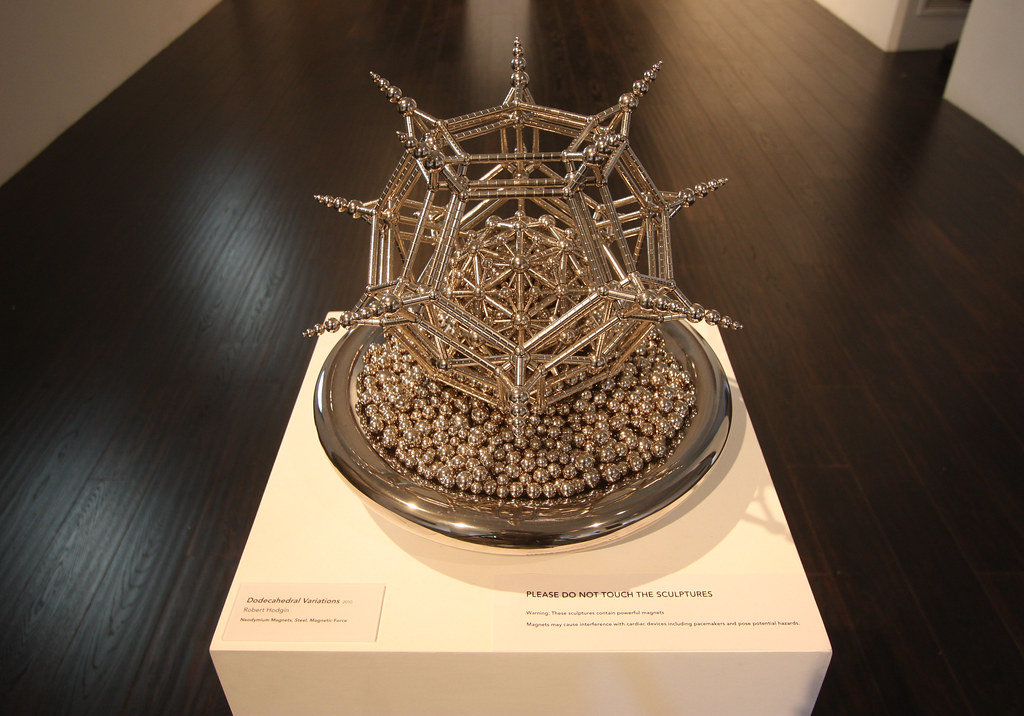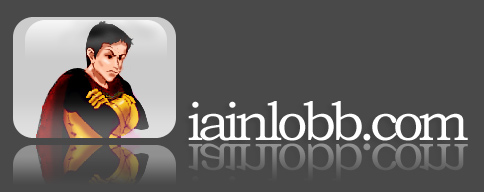This year had just as much magic as my first one, back in 2007.
It even had a funny side, because as disturb media we did the opening act.
Found it hard to choose sessions yet again. This year though, attendees should be able
to access video recordings at some point. I hope this won't take too long. I remember the some of the videos made the site in spring.
Again, couldn't find a balance between design and development. Maybe it's just me, but sessions seemed more developer focused. Little mention about flash animation, but in defense, there were brilliant talks on motion graphics/video by Nando Costa(who made the amazing titles this year,featured bellow), Julien Vallée(whom disturb were delighted to meet) and Mr.Imagination-Running-Loose himself Cyriak Harris
FOTB 2010 Titles from Süperfad on Vimeo.
The theme this year seemed to be playfulness, a celebration of homo ludens in any environment, be it commercial or not.
Even from the first session, Grant Skinner showcased fun projects that tied creativity, games and practicality somehow together, from sound visualizers to Android/Phidgets/voice controlled cars. Speaking of sound visualizers, at the LFPUG Aftermath, Grant explained the fast and easy way to do visualizers in as3: leftPeak and rightPeak instead of computeSpectrum.
Andre Michelle did a great session on dynamic sound generation in flash player 10 and showed some awesome tunes people created using Audiotool. Also, he generously released the code used in his workshop.
Mario Klingermann announced his last talk for at least a year, but showed some amazing uses of image processing, including solving jigsaw puzzles. Luckily I had the chance to exchange a few thoughts on solving puzzles (as I'm solving simpler ones) and got some pretty good advice. It looks like I will be learning a lot of new things in the near future. Thank you for your help Mario!
Unfortunately I missed Stacey Mulcahy's session in favor of toxi's one. His session explained why opensource is so important in a very articulated and logical manner. It sounded so simple, to grow or not to grow...isolated systems do not develop as well as the ones in an open environment. It was a passing of experience from years of coding, and an great proof of that are the toxiclibs:
toxiclibs showreel 2010 from postspectacular on Vimeo.
I was lucky enough to win one of his 3d prints generated with toxic libs...YAY!


Robert Hodgin held another inspiring talk. His journey through computation and art helped gain hands on experience in re-creating things found in nature that we often take from granted. Personally I was very pleased to see how a mind that seemed split between art and logic somehow found peace. I say somehow, but what I mean is doing what you love and restlessly devote yourself to this. From magnetism to Radiolaria, Robert makes me think of a contemporary Ernst Haeckel.

Image originally from Robert Hodgin's Portfolio
Stefan Sagmeister closed the 1st day with a showcase of great design projects and a lot of lessons for life. If there's one word I could summarize Stefan by, without using foul language, I would say confidence.
The second day kicked off with the Elevator Pitch. A lot of good speakers, too little time(3mins each). Flashmagazine has a good feature on that. Some of the speakers, like Nicolas Barradeau, should have their very own session. There were other interesting talks on that pitch, including the Doomsday Console, as3sfxr(Thomas had an awesome 8-bit style presentation as well), xJSFL and many others. I thought I would see a talk by Matt Pearson this year, but he seems to be a bit busy with a great book on Processing and Generative Art.
Branden Hall also touched a bit on opensource, but also focused on HYPE!. Last year I posted a few details on HYPE!. It is a great framework, and hopefully more artists/designers will tinker with it. I remember the "good ol' days" when people just hacked away in flash mixing illustrations and scripts to produce amazing pieces. People like Erik Natzke, Joshua Davis, James Patterson, etc. matured creatively from such experiences, and still use Flash/actionscript to this day. Hopefully more people will pick this up and just have fun!
Branden also briefly mentioned scheme, and my mind went straight to live coding and fluxus. I recommended this to Branden and he was excited about it. Who knows, maybe we'll see something materialize from this.
Joa Ebert was the highlight on technical achievements in the world of Flash Player this year. From Apparat, Joa started of a new project called JITB which is a Flash Player that runs in the Java Virtual Machine. There were plently of amazing tech demos, including compiling Pixel Bender shaders to GLSL Shaders. I understood the bit about GLSL shaders as I played a used them a bit for my OpenGL coursework, but the rest of the talk was way over my head to be honest. At one point I was wondering why not learn Java instead, or use something else. One thing I can think of is, with this project, people that already know actionscript and use it for art installations/design projects could use they're existing knowledge, but get much faster results than what the Flash Player can deliver at the moment. That is one application that comes to mind, but surely there must be more.
After such a technical session I went to see Florian Schmitt's session. At some point in the talk, the line between art and design got blurred, which was nice too see.
Julien Vallée
showcased fun and playful motion graphics, again the theme of home ludens re-occured indirectly, not only in the colours and motion, but also in the material themselves. Instantly I was reminded of how fun it was to play with paper,scissors and colours.
Unfortunately I missed Mind Candy's talk, but my only excuse is, I did see them at LFPUG. Sorry Cat! I briefly spotted Mike Jewell, whom I had the pleasure to meet at Goldsmiths, and get his help as a PhD student. He did quite some impressive work for Moshi Monsters while he was there.
Nando Costa did a great talk about motion graphics, commercial work and the fun of just making things you like, even if they prove to be successful commercially or not. I didn't expect to see a session about failed projects, but that is a key to moving forward. You learn more from making mistakes than from fearing them. Fear never lead to anything, at least when creating. I linked this to being open vs. closed.
Brendan Dawes closed the second day with a brilliant talk. Less noisy than 2007(no more MaxMSP/turntable/webcam action), but insightful nevertheless.
It tied in with the cool things we learned in the Creative Computing course. If you've liked the videos from his session, do check out the ones from our Audio Visual Processing course
After 2 nights of drinking, I made it in halfway though the Jam Session.

Linked to the Elevator Pitch and people that didn't belong there, just because they're that good, I was glad to see Iain Lobb in a full session. I've seen a few of his previous talks. Obviously, he knows what his talking about and has plenty of hands-on experience, but his passion for what he does makes him a brilliant presenter. Proof of that, he filled the whole theater in just a few minutes and there were plenty more people that couldn't even make it it. John Davey should reconsider location for a future talk. If you're interested in Game Design and Flash, do have a look at his blog as he also shares the awesome interface he used in talk.
I missed Doug McCune's session, which sounded very interesting, but saw some awesome demos and learned about Spherical Harmonics in Ralph Hauwert's session.
Cyriak Harris was a proper break from the "ugly face of reality", if you haven't already, do check out his awesome videos.
Joshua Hirsch from bigspaceship had a talk about personal project in a commercial environment. I didn't see his talk last year, but I understood the one this year was pretty similar. Don't know if anybody else noticed, but the guy complained about not many employees committed to personal projects. After he mentioned that bigspaceship takes ownership of the ideas and some of the incentives were things like "meal in a restaurant" it was obvious to me. disturb isn't as large as bigspaceship, but it certainly treats personal projects and encourages ideas better.

The closing talk was given by Jared Tarbell. Another great talk about the link between nature, simple agents and emergent systems...creating complexity from simple behavior. Some new work was showcased, and there were a lot of insights into the manufacturing process of his artwork, from the algorithm running on a computer to the physical world(be it print, laser engraving, etc.)
In 2007 I saw Jared's talk for the first time and was amazed. Generous as he is, he gave some of his art pieces to the public, but I was way in the back. I was a bit sad I couldn't get one of his wood prints, but somehow, he threw one that landed straight onto my lap. That was magic! This year I thought I should go to the front. I didn't manage to catch a wooden cube, but chance made it so, that one felt into my open bag...again I might be tempted to carry on about how random things aren't actually random, and there's a reason for most events, but I will stop here. Luckily I had a little something for Jared too. With such awesome people to fuel my confidence, you will see some generative art pretty soon...


